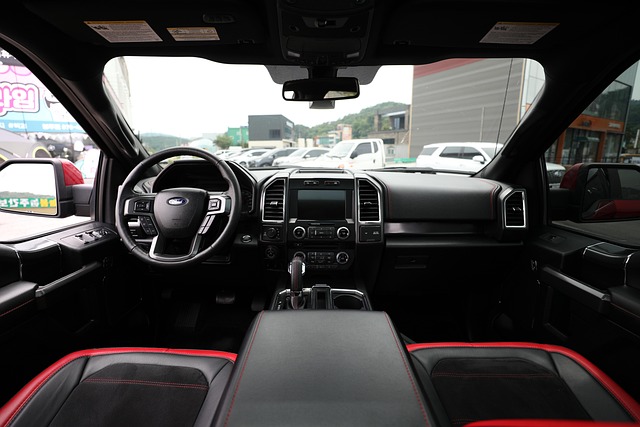Looking to register your car in California? This comprehensive guide walks you through the entire process, from understanding eligibility to receiving your license plate. First, ensure you meet the basic requirements set by the DMV. Next, gather all necessary documents and verify your vehicle’s identity using a reliable DMV VIN verifier. Complete the registration application form accurately, pay the fees, and voilà—you’re officially registered!
- Understand Eligibility and Requirements
- Gather Necessary Documents
- Verify Vehicle Identity (VIN) at DMV
- Complete Registration Application Form
- Pay Registration Fees and Receive License Plate
Understand Eligibility and Requirements

Before you begin the registration process, it’s crucial to understand the eligibility and requirements for registering a car in California. To ensure a smooth experience, your vehicle must meet certain criteria. One essential step is to obtain a Vehicle Identification Number (VIN) inspection, which can be done through a DMV-approved vin verifier or by using mobile vin verification services. This process verifies that your car’s VIN is accurate and matches the vehicle’s make, model, and year.
Additionally, you’ll need to ensure that your vehicle is road-worthy and compliant with California’s safety standards. Check for any outstanding recalls or required maintenance to avoid delays. Having all the necessary documents ready, such as proof of ownership, insurance, and identification, will also streamline the registration process at the DMV (Department of Motor Vehicles).
Gather Necessary Documents

Before registering your car in California, it’s essential to gather all the required documents to streamline the process. The first step is to obtain a Vehicle Identification Number (VIN) verifier from the Department of Motor Vehicles (DMV). This tool helps validate and retrieve crucial information about your vehicle, including its history and any outstanding issues. Once you have this, it’s time to collect other essential paperwork, such as proof of ownership, current registration, insurance card, and a valid driver’s license.
For added convenience, consider opting for a mobile VIN inspection or verification service. These services send a specialist to your location to complete the VIN check, ensuring a hassle-free and faster process. This is particularly beneficial if you’re busy or have a hard-to-reach vehicle. With all these documents in hand, you’re ready to register your car with the California DMV.
Verify Vehicle Identity (VIN) at DMV

Before proceeding with the registration process, it’s crucial to ensure your vehicle’s identity through a proper VIN (Vehicle Identification Number) verification at the DMV. This step is essential as it helps in accurately documenting your car’s details and ensures that you’re registering the correct vehicle. The DMV offers several methods for this, including both online and in-person options.
For convenience, many individuals opt for a mobile vin inspection or mobile vin verification service, which allows for on-site checks. This way, you can cross-reference the provided VIN with the vehicle’s actual details, ensuring there are no discrepancies. By completing this simple yet vital step, you’ll have one less hassle to worry about during your car registration in California.
Complete Registration Application Form

To begin the car registration process in California, you’ll need to complete and submit the Registration Application Form (DMV Form 140). This form requires detailed information about your vehicle, including its make, model, year, and unique Vehicle Identification Number (VIN). The VIN is a crucial piece of data for any vehicle, acting as a digital fingerprint that allows for accurate identification. Many Californians opt to use a mobile VIN verifier to streamline this step, ensuring their vehicle’s history is quickly and accurately accessed.
By entering the VIN, you enable the DMV to perform a vin inspection, which checks against state and national databases to confirm the vehicle’s authenticity and ensures it meets all legal requirements for registration. Whether using a traditional paper form or a mobile vin verification service, this initial step is essential before proceeding with any car registration procedures in California.
Pay Registration Fees and Receive License Plate

After completing your vehicle’s registration application at the California DMV, the next step is to pay the required fees. These fees vary based on your vehicle type and other factors, so it’s essential to check the official DMV website or consult a staff member for accurate information. You can typically pay online, by mail, or in person. Once your payment is processed, you’ll receive your vehicle’s license plates. These plates are assigned based on availability and might differ from the ones you selected during the application process.
To streamline this process, consider using a mobile VIN verification service. This digital tool enables a vin inspection right from your smartphone, making it convenient to verify your vehicle’s information and even complete some registration tasks online. By utilizing these modern solutions, you can save time and ensure a smoother car registration experience in California.
Registering a car in California is a straightforward process, but understanding the requirements and gathering the necessary documents is key. By verifying your vehicle’s identity using a DMV VIN verifier and completing the registration application form accurately, you’ll be on your way to securing your new vehicle’s legal status promptly. Remember to pay the registration fees and receive your license plate to drive legally in the Golden State.
